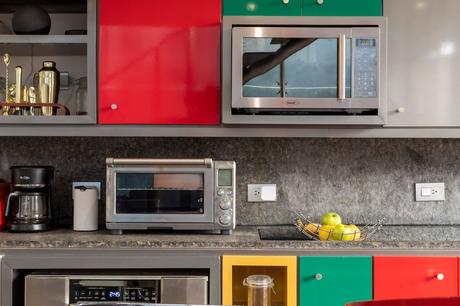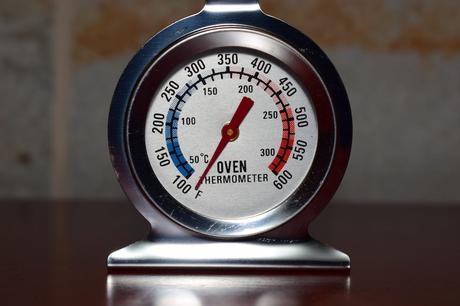Our daily life would not be complete without household appliances. We are all afraid of that. Your laundry room floods when your washing machine malfunctions in the middle of a cycle. After you've recently replenished with goods, your refrigerator shuts off. Or your oven breaks out right before a sizable holiday meal.
Many consumers are unaware that these, and other serious appliance problems, can be prevented with a little care taken with control valves used in various machine functions. Here, we will discuss easy 12 household appliance maintenance tips that save you time, money, and headaches.

Photo credit: Unsplash
The first step in maintaining your household appliances is to read the user manual. Although it may appear tiresome, the manual contains vital details like the appliance's maintenance needs, safety advisories, and troubleshooting advice. By reading the manual, you can avoid common mistakes that could damage your device and ensure you're using it correctly.
Regular cleaning is essential to ensure that your appliances function efficiently. Dust and debris can accumulate in and around machines, causing them to work harder and use more energy. To prevent this, clean your appliances regularly, including the exteriors, interiors, and filters.
For instance, clean your refrigerator's condenser coils to prevent dust and dirt build-up that could cause the compressor to work harder than necessary. The control valves for your HVAC and gas systems should always be inspected to ensure proper operation. Cleaning your dryer's lint filter will also improve the appliance's performance and prevent the risk of a fire.
You could be exposed to dangerous water if filters don't remove pollutants and toxins. Different models have different instructions for changing the filter, but for the most part, it just requires twisting the filter a quarter-inch and popping it out or locking it in place. Depending on how much water gets used, perform this straightforward task every three to six months.
Leaks are common in appliances like dishwashers, washing machines, and refrigerators. Even little leaks can cause significant damage to your home and appliances. To prevent this, check for leaks regularly by inspecting the hoses, connectors, and valves. If you notice any leaks, replace the damaged parts immediately.
Your oven might not always reach the proper temperature. This circumstance is a sign that the oven's temperature settings require calibration. Follow the instructions in the user manual for your device for the best results. If the handbook is nowhere to be found, your only option might be to search online for a digital version.
In most cases, calibrating your oven requires a thermometer that is in good working order. Place the thermometer on the middle shelf of the oven and leave it there until it achieves a stable temperature. Then, adhere to the instructions in your user manual to match the thermometer's output to the temperature readings in your oven.

Photo credit: Pexels
Your home appliance's capacity to dry your clothing is impacted by the dryer exhaust. A dirty dryer exhaust might also start a fire. The dryer exhaust gets positioned behind the dryer. To begin cleaning it, release the clamp and pull at the exhaust. Before fully vacuuming the component, use a straight coat hanger to remove lint clumps from around the tubing.
Appliances have many moving parts that can wear out over time, causing them to function improperly or not. If you notice worn-out parts, such as a frayed power cord, a broken door latch, or a malfunctioning thermostat, replace them immediately. Failure to do so can cause more significant problems and pose a safety risk.
Seals are essential for many appliances, including refrigerators, dishwashers, and ovens. They prevent air and moisture from entering this appliance as it can affect its performance and efficiency. Over time, seals can become dirty, cracked, or loose, which can compromise their effectiveness. To prevent this, clean the seals regularly and replace them if necessary.
Using the wrong cleaning products can damage your appliances, especially those with sensitive surfaces. For instance, using abrasive cleaners on a glass stovetop can scratch and damage the surface. Similarly, using bleach or harsh chemicals on a stainless steel refrigerator can cause discoloration and damage the surface. To prevent this, use the right cleaning products recommended by the manufacturer.
Using appliances correctly is essential to prevent damage and ensure their longevity. For instance, overloading a washing machine or dishwasher can cause it to malfunction or break down. Similarly, running a microwave without food inside can cause the magnetron to burn out. To prevent this, follow the manufacturer's instructions and use the appliances correctly.
Check for large, trapped objects, and turn off the garbage disposal. To remove obstructions, use tongs or a different tool rather than your hands. Pour the vinegar, salt, or ice cubes down the drain to clean it. Hang on the appliance after ten seconds of soaking it in cold water. Put a few orange peels in the disposal, turn the water on cold then turn it on to eliminate odors.
Regular servicing is essential to keep your appliances functioning and extend their lifespan. A professional technician can identify and fix problems before they become more significant and expensive to repair. Some appliances like air conditioners and heaters, require annual servicing to maintain efficiency and prevent breakdowns.
You were going to have a rather unpleasant situation on your hands if your power goes out and food spoils in your refrigerator and freezer.
- Clean everything with a disinfectant cleaning spray after removing the food.
- Inside the freezer thoroughly clean every crevice, paying attention to the shelf supports.
- Smash roughly 12 charcoal briquettes, then divide the pieces between two pans. Both go in the refrigerator and freezer, respectively.
- Fill the shelves with crumpled-up newspaper.
- Giving the charcoal and newspaper some time to absorb odors, shut the doors, and leave the room.
- Every day for about a week, or until the odor is gone, replace the used newspaper and charcoal with fresh materials.
